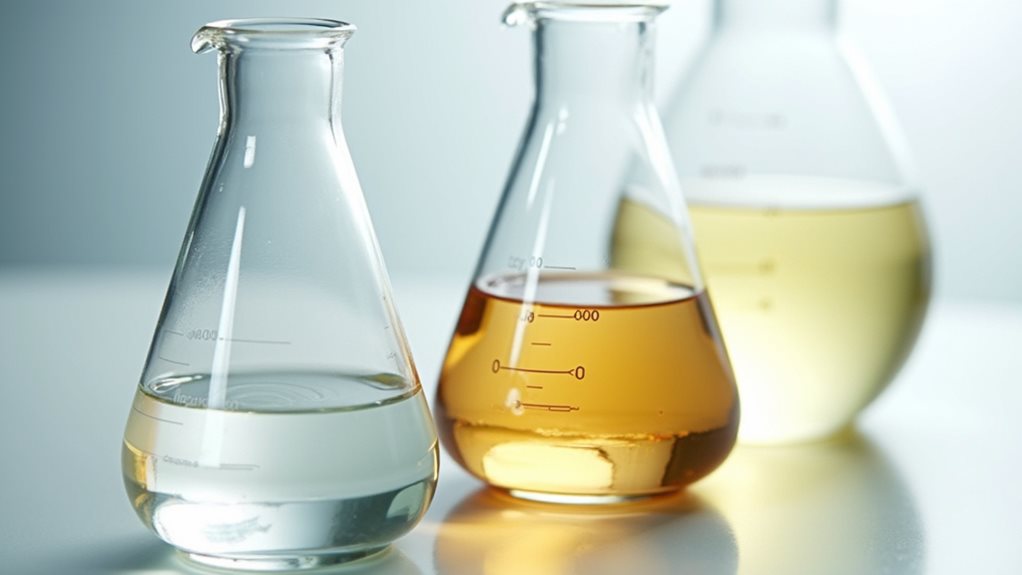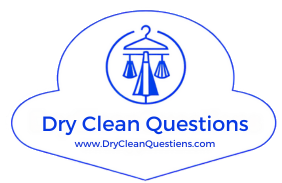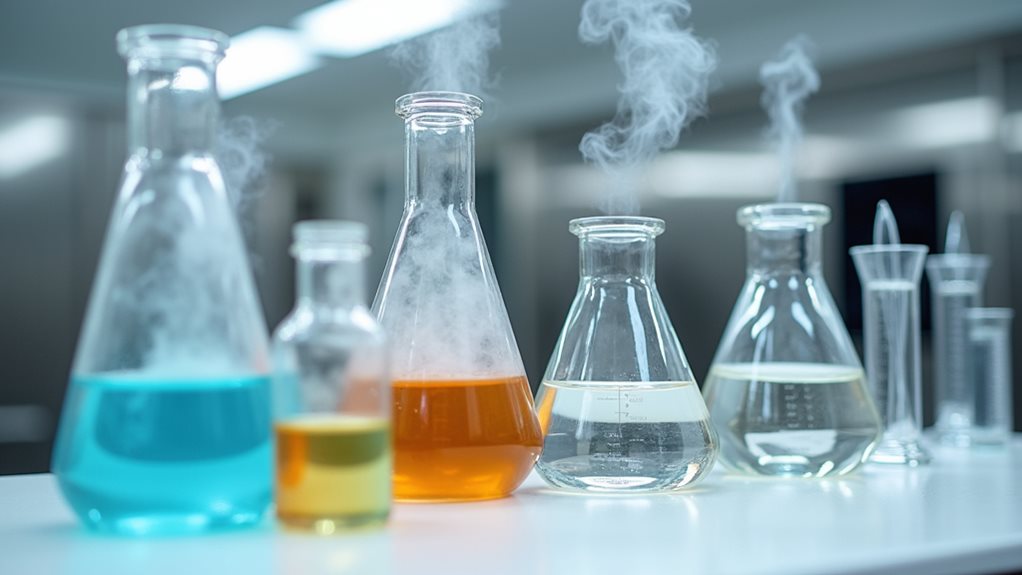Your dry cleaner’s arsenal includes four main chemical warriors, each with distinct personalities and quirks that’ll surprise you. PERC dominates the industry despite being a potential carcinogen, while hydrocarbon alternatives offer gentler VOC-based cleaning that’s adopted by about 20% of cleaners. Emerging eco-friendly options like biodegradable siloxane and liquid carbon dioxide promise safer futures, though they’re pricier and less common. Understanding these chemical choices helps you make smarter decisions about where you’ll trust your favorite garments.
Perchloroethylene: The Industry Standard Solvent
For nearly a century, perchloroethylene—or PERC as most folks in the industry call it—has dominated America’s dry cleaning scene like that reliable friend who always shows up but maybe isn’t the best influence 😅.
This dry cleaning solvent became the go-to choice because, honestly, its cleaning performance is pretty impressive when it comes to dissolving grease and stubborn stains.
However, here’s where things get concerning: PERC is classified as a potential human carcinogen and poses serious health hazards to workers and customers alike.
PERC’s cancer risk and health dangers to workers and customers make it a seriously problematic choice for dry cleaning operations.
As a volatile organic compound (VOC), it contributes to environmental contamination that we simply can’t ignore anymore.
That’s why you’re seeing the dry cleaning industry slowly embracing safer alternatives, even though roughly 60% still rely on this problematic chemical.
Prolonged exposure to PERC can lead to neurological symptoms and respiratory irritation, making proper ventilation in dry cleaning facilities absolutely essential for worker safety.
Hydrocarbon-Based Alternatives and Their Properties

Although the dry cleaning industry has been gradually moving away from PERC, the hydrocarbon-based alternatives that roughly 20% of cleaners have adopted aren’t exactly the environmental heroes they’re often marketed to be.
Despite being labeled as “environmentally friendly,” these petroleum-based solvents are still volatile organic compounds (VOCs) that contribute to ozone formation and respiratory issues.
Here’s what you should know about these hydrocarbon solvents:
- Aliphatic hydrocarbons like White Spirit create a dry feel on cleaned fabrics
- Flame-retardant properties make them safer than gasoline in cleaning facilities
- Solvent recovery systems help reduce waste, though health implications persist
- Scented oils are added to mask their naturally strong petroleum odors
While they’re marketed as “organic” solutions, remember that petroleum-derived doesn’t equal planet-friendly! 😅
Other innovative alternatives include liquid carbon dioxide and silicone-based GreenEarth solutions, which are gaining traction among environmentally conscious dry cleaners seeking safer cleaning methods.
Emerging Eco-Friendly Solvents: Siloxane and Carbon Dioxide

As the dry cleaning industry scrambles to find truly sustainable solutions, two fascinating alternatives have emerged that actually deserve the “eco-friendly” label, though each comes with its own quirky set of trade-offs that might surprise you.
Siloxane, used by fewer than 5% of cleaners, breaks down into harmless silica and carbon dioxide, making it a genuinely biodegradable option for textile care that won’t fade your favorite blouse or irritate sensitive skin.
A rare but genuinely green dry cleaning solution that’s gentle on both fabrics and skin while actually biodegrading completely.
Meanwhile, liquid carbon dioxide works brilliantly for rinsing but struggles with stain removal, plus it releases 6-10 pounds of CO2 per cycle (ironic for fighting global warming, right?).
Both eco-friendly solvents beat perchloroethylene (PERC) on health and environmental concerns, though operational costs remain stubbornly high.
For consumers seeking alternatives to traditional chemical cleaning, steam cleaning offers another viable option that uses high-temperature water vapor to remove dirt and odors without any chemical solvents.
Health and Environmental Considerations of Dry Cleaning Chemicals

When my neighbor started complaining about persistent headaches after the new dry cleaner opened downstairs from her apartment, I didn’t initially connect the dots until I learned that PERC exposure affects nearly 30,000 dry cleaning workers nationwide and countless community members who live or work nearby.
Perchloroethylene (PERC) creates serious health risks, from skin irritation to cognitive issues, while degrading air quality through VOC emissions that linger long after dry cleaning operations close.
Here’s what you should know about these environmental impacts:
- Legacy contamination persists in soil and groundwater for decades
- Workers face mean exposure levels of 59 ppm during operations
- Alternative solvents still require long-term safety evaluations
- Regulatory measures continue evolving to protect communities
Consumers can reduce their exposure risk by allowing freshly dry cleaned garments to air out completely before wearing, especially since PERC residues can remain on clothing that hasn’t been properly ventilated.
Understanding these risks helps you make informed choices about both workplace safety and neighborhood health!
How Different Solvents Affect Fabric Care and Cleaning Performance

Beyond these health concerns, the solvents used in dry cleaning dramatically impact how well your favorite garments are cleaned and preserved. This is something I discovered the hard way when my silk blouse came back from one cleaner looking vibrant and fresh, while another shop left it dull and slightly stiff.
Here’s what I’ve learned about different dry cleaning solvents and their cleaning performance:
Perchloroethylene (PERC) excels at removing stubborn oil-based stains but can damage delicate fabrics, while biodegradable siloxane offers superior fabric care for sensitive materials.
Hydrocarbon solvents provide gentler cleaning but may lack PERC’s stain-fighting power.
Surprisingly, wet cleaning often outperforms traditional methods by tackling both water and oil-based stains effectively.
Understanding these solvent interactions helps you match cleaning requirements with fabric needs.
Many dry cleaning establishments continue to rely on petroleum-based solvents despite environmental concerns because of their proven cleaning efficacy and the established infrastructure already in place.




